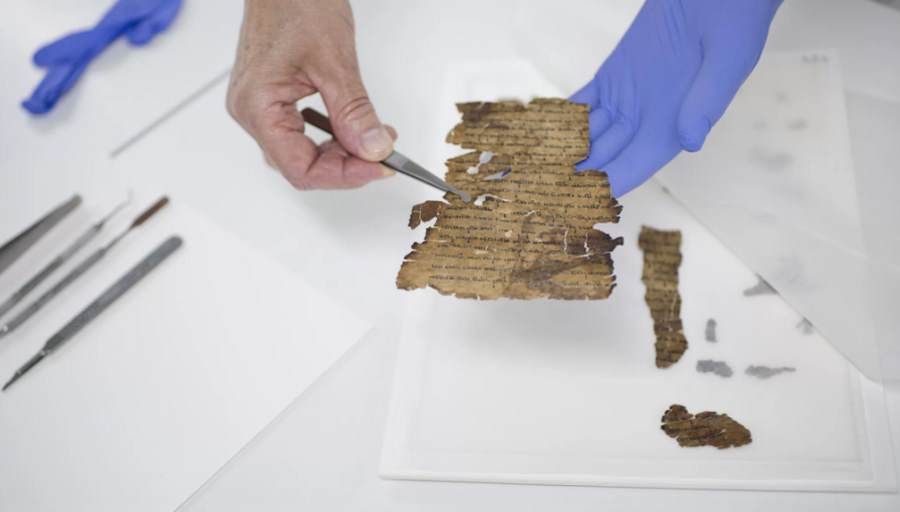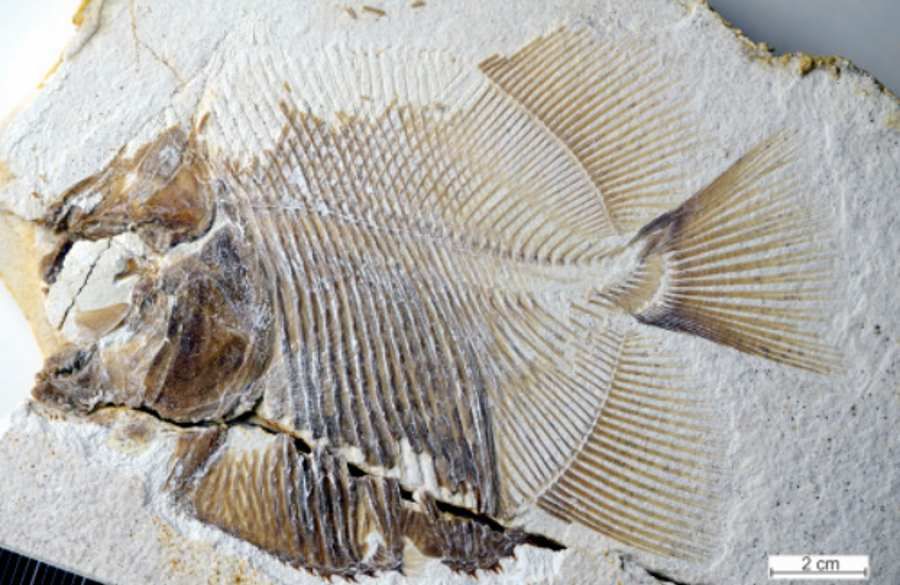Dead Sea Scrolls in the collection of the Museum of the Bible are forgeries
The Washington Museum of the Bible, which opened last year, boasted a collection of fragments in the manuscript from Qumran. However, all indications are that a large part of their biggest attraction is a podr bki. First suspicions about the authenticity of the specimen in the museum, scientists unconnected with the museum reported shortly after it opened.
The museum responded to criticism by sending five of the fragments scroll The Dead Sea to the Bundesanstalt für Materialforschung und-prüfung – German institute for the study of the material . Experts there have conducted a series of studies covering the m.in. scanning with an X-ray fluorescence spectrometer, material analysis of ink, or analysis of sediment in the manuscript fragments . Unfortunately, according to the museum, all fragments sent for examination "show features that do not ith ancient origins". In other words, these are not 2000 year old texts, but cleverly crafted forgeries.
The museum announced that the fragments bki will no longer be on public display. However, the question remains about the authenticity of the remaining fragments in the coil . The museum said in a statement that the rest of the collection r ill also be examined.
The Dead Sea Scrolls, obviously the authentic ones, represent the earliest preserved fragments of the Old Testament. The first of these was found in 1947 in a cave near the ruins of an ancient settlement – Qumran. 12 more similar caves have been discovered, but some of them have been looted by robbers The Dead Sea Scrolls in the Museum’s collection are forgeries .
The manuscripts were cut into pieces and put up for sale. This was due to the greed of the dealers. The fact that researchers do not know exactly how many coiled were found in caves and how many pieces of here they have been cut up, it gives forgers a field of. Over the past two ch decades on the antiquities market Many alleged fragments of in the manuscript , which The Dead Sea Scrolls in the Museum’s collection are forgeries. At least 45 new fragments appeared in the United States alone during this period in the scroll in the Dead Sea. The unclear history of the scrolls The evidence suggests that someone may still be in possession of the fragments, which have not yet been discovered by the scientific community.
Several fragments in the scrolls of questionable provenance, which re appearing on the market in recent years, it was purchased by a wealthy Green family and found their way into the collection of the family-funded Museum of the Bible. Unfortunately, it turned out that the billionaires fell prey to fraud . Although the family did not state exactly how many pieces the manuscript in, it can be assumed that it was a small fortune.
Adding spice to the case is the fact that the Green family has had problems with ancient artifacts before. Last year the Greens paid three million dollars The caves were used as punishment for illegally bringing cuneiform clay tablets or seals into the United States also made of clay and other ancient objects hich re came from Iraq struggling to get back on its feet after the war.
Last year, 28 previously unknown fragments were placed in the hands of representatives of three American institutions in the scroll Qumran. The purchased scrolls are examined by specialists in which ho suspect that some of them r The contents of those found by Bedouin may also turn out to be forgeries. Already before, there had been pr b selling fake scrolls . Anonymous persons demanded huge sums for the exhibits, who The manuscripts were cut into pieces and put up for sale in Jerusalem bazaars in, from which the whole story began. He was the first to come into possession of the priceless ancient scrolls just after the Second World War.
Nine of the 28 scrolls in which recently appeared on the market in the United States is in the hands of Southwestern Baptist Theological Seminary in Forth Worth, Texas. Another four are located at Azusa Pacific University in Azusa, Calif. The rest, i.e. 15 recently sold manuscripts in which The first two complete scrolls containing the biblical texts of Isaiah and the commentary on Habakkuk in the Old Hebrew script, reported by an anonymous dealer through the company Les Enluminures, are in the possession of an institution that ra did not want to reveal its name. Perhaps it is the Green family .
Dead Sea Scrolls
Shortly after World War II, three Bedouin boys in following the herd of k from and sheep discovered a cave in which They found jars containing ancient Hebrew scrolls. The manuscripts were cut into pieces and put up for sale in the Jerusalem bazaars. By chance, one such piece ended up in the hands of an antiquities dealer from Bethlehem, which ho contacted a professor at the Hebrew University of Jerusalem to assess the value of the finds.
The professor immediately realized what he was dealing with and asked the dealer to deliver more fragments . This is how b the scholar got his hands on three complete scrolls. After the valuable find was bought back, the analysis of the manuscripts . The first two complete scrolls contained the biblical texts of Isaiah and a commentary on the Book of Habakkuk written in Old Hebrew script. The third contained a previously unknown text depicting an apocalyptic war between the forces of light and the forces of darkness known today as the Zw j Wars.
In the cave discovered by the boy were seven scrolls . After r After various perturbations due to the greed of traders and tensions related to the loss of the British mandate over Palestine, all the scrolls ended up in Israel. The last four were purchased through an advertisement published in the „The Wall Street Journal”.
A total of 11 caves containing ancient manuscripts were discovered between 1947 and 1956. Some of the caves have been discovered by scientists The contents of those found by the Bedouin The same thing happened as with the manuscripts from the first cave. They were cut into pieces and sold in the bazaars. In addition, some of the caves had already been robbed. It should also be noted that the tooth of time has left its mark and some The scrolls were found in a terrible condition.
12 cave at Qumran discovered in 2017
70 years after the discovery of the first cave, archaeologists from the Hebrew University of Jerusalem have announced the discovery of another, the 12th cave in the Qumran area. However, researchers have not found any new manuscripts there. They believe the cave was looted in the mid-20th century.
Behind the discovery are the aforementioned archaeologists from the Hebrew University of Jerusalem and their colleagues from the Israel Antiquities Authority under the auspices of the state administration.
In addition to the remains of broken jugs , experts came across a small scrap of parchment. – We have undoubtedly discovered another cave, but unfortunately there are no further manuscripts in it – said last February the head of the excavation, Oren Gutfeld. In the 12th cave, a scroll was found The strips used to bind the scrolls and pieces of material in which they were wrapped. Similar artifacts have been found in 11 earlier caves.
They determined the age of the scrap of parchment found and the remains of vessels that The scrolls are thought to be from the first century AD. It’s the same age as the other coils . – Until now, it was assumed that Dead Sea scrolls were only found in 11 caves at Qumran. Now there is no doubt that we have found the 12th cave – highlighted by Gutfed. Scientist added that there may be more caves containing scrolls.
No text on small piece of parchment found in 12th cave. However, researchers want to do a thorough analysis of which ra will show whether the scrap contains writing that has faded with time.



